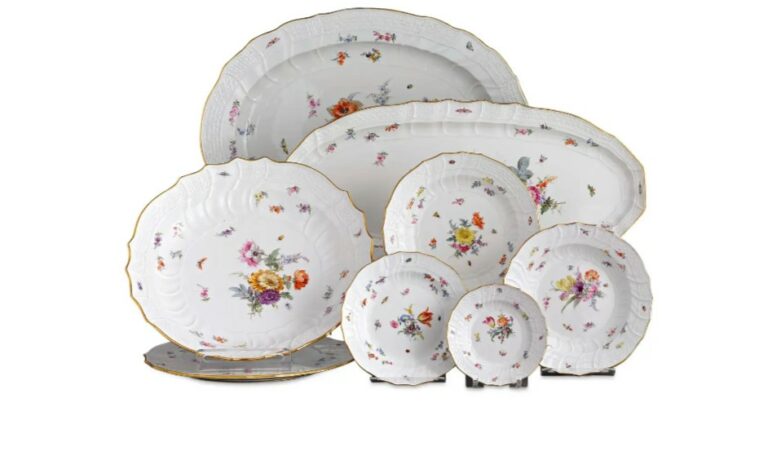Written l’Ilui Nishmas the Author’s Mother Sara Bas HaRav Eliyahu Hoffman – 22 Av on her 15th yahrtzeit.
By Rabbi Yair Hoffman for 5tjt.com
Recently, a hedge fund manager of note was vacationing in the south of France and had a halachic question. It seems that a close friend of his had porcelain dishes with great value – both sentimental value and financial value. The dishes had not been used for over ten years. He wanted to know if there was any heter to use the dishes. The question was posed to the famous Tovelling master – Jonathan Terebelo – who posed the question to a Rabbi he knew. The Rabbi gave a leniency based on a number of factors – one of which was a responsum of Rav Moshe Feinstein zt”l (IM YD Vol. II #46) who had based his responsum on an earlier responsum of the Chacham Tzvi (#75).The Chacham Tzvi was one of Israel’s greatest lights in the 17th century and was a Rav in England, but began his career in Amsterdam.
SNIFIN LEHAKEL
The concept is called “Snifin LeHakel” – which means that at certain times, in particular situations, a Rabbi can combine a number of mitigating factors to create a leniency. This is the reason why most Orthodox Jews still use Styrofoam cups – even though zinc stearate, a lubricant used to release the cups from the machinery of which it is made. Zinc stearate is derived from tallow – an animal fat. The animal fat is not kosher, of course, and the only reason why Orthodox Jews can drink from these cups is because of “Snifin Lehalel – combining multiple mitigating factors.”
MUCH EARLIER
The story would seem to date back to the time of Chacham Tzvi in the late sixteen hundreds or early seventeen hundreds. However, in reality, it began much earlier.
Rabbi Shimshon ben Abraham of Sens (the Rash MiShans) who lived in the late 1100’s to early 1200’s – wrote a commentary on the Mishna. The Rash in his comments to Taharos 10:8 seems to indicate that after 12 months all ta’am – all taste absorbed within a barrel dissipates. This is the understanding of the Mishna Achrona in explaining a contradiction between the Mishna in Taharos 10:8 and that in Kailim 9:5. The Mishna Achrona correlates the opinion of the Rash to that which is explained in the Chacham Tzvi (Siman 75).
THE CHACHAM TZVI
What does that Chacham Tzvi say? He writes that if a pot is not used for more than 12 months, the absorbed taste (taam) in the pot completely dissipates. He rules that even if the pots were used to cook a sharp food, the taste of the non-kosher will not be brought back alive. The Chacham Tzvi, however writes that one must still kasher the dishes by Rabbinic law. Why? So that one will not confuse the halacha and think that non-kosher pots can be used without koshering – for the same reason that aino ben yomo pots must still be kashered before use lest they be confused with pots that were used that day. there is still a Rabbinic requirement to kasher the pot, lest one become confused and conclude that non-kosher pots may be used without kashering.
OTHER MITIGATING FACTORS
There are two other mitigating factors that may be added and that is that there is a minority view that porcelain is likened to glass. Another mitigating factor is that plates may be considered a kli shaini [which has limited cooking and absorption] and that the Shach disagrees with the view of the Maharshal regarding davar gush.
RAV MOSHE’S STRINGENCY
Rav Moshe Feinstein, however, writes that this minority opinion can only be followed in combination with a huge loss or something similar. He applies it to sentimental as well. He does have one caveat. He says that the hagalah should be done three times – not once, like the Chacham Tzvi had written.
The main authority who disagrees with this position is the Rashba (Vol. I Siman 575) who writes that the leniency is only in regard to wine in barrels – but to no other prohibition.
MORE AUTHORITIES WHO AGREE WITH THE CHACHAM TZVI’S SUPPOSITION
There are more Poskim that have expressed views similar to the Chacham Tzvi. The Pischei Teshuvah YD 122:3 cites the Chacham Tzvi approvingly. The Chochmas Adam 55:4 cites the Chacham Tzvi as the first opinion and brings the other opinion only as a “and there are those who argue. The import is that he agrees with teh Chacham Tzvi.
The author can be reached at [email protected]












One Response
I don’t believe he was ever a rabbi in London. He spent a short time there when he had to flee Amsterdam, but he soon rejoined his family in Emden and they traveled together to Poland.